Bra Sizes and Bigger Breasts: Where’s the Science?
By Elisabeth Dale

Recent survey results from bra retailer, Intimacy, revealed that American women are wearing bigger bras than they did 20 years ago. The average size reportedly jumped from 34B to 34DD. Media outlets covered this news with headlines such as “breasts getting bigger,” or “America’s cups runneth over.” It was shocking to think that women’s busts had tripled in size. But is it true? Or could women, thanks to a booming lingerie industry, have finally opened their eyes to their correct bra size? What are the facts?
This isn’t the first time that larger bra sizes have been in the news. Some think it’s linked to the soaring rates of obesity. Plus size bra offerings have expanded over the years. But while breasts are mostly made of fat, not every woman gains, or loses, weight in her chest. Many women have pear shaped body types, with fat settling into hips and thighs. Plus obesity can’t account for the rise in deeper cup bra sales (bands starting at 28 with cups DD to J). More and more lingerie brands are targeting a youthful, small back/deep cup market.
Others blame swelling sizes on an increase in breast augmentation procedures. But, again, there are no studies connecting sales of bigger bras to super-sized implants. Implant volumes are measured in cc’s, not bra cup sizes. These vary depending on a woman’s height, weight, and even geographic area. Many women rely on implants to restore breast volume lost by pregnancy, not triple breast size. Even post-surgery photos reflect more body proportionality than the assumed top-heavy stereotype.
Some are convinced that breast size has been altered by the increased use of hormones or pollutants in the environment. But again, no research organization or scientific body has come forward to confirm or deny these theories.
Bra manufacturers may be more in touch with their customers. Attractive bras above a D cup weren’t always available in US department stores. Today women can find AA to K cups, in lingerie shops or through on-line retailers. A 34 DD isn’t so out of place in this broader alphabet cup spectrum. It’s still hard to believe that women had been stuffing themselves into too small bra sizes for decades; suffering silently until they met up with the right bra fitter. Which is more likely? Did supply create demand or the other way around?
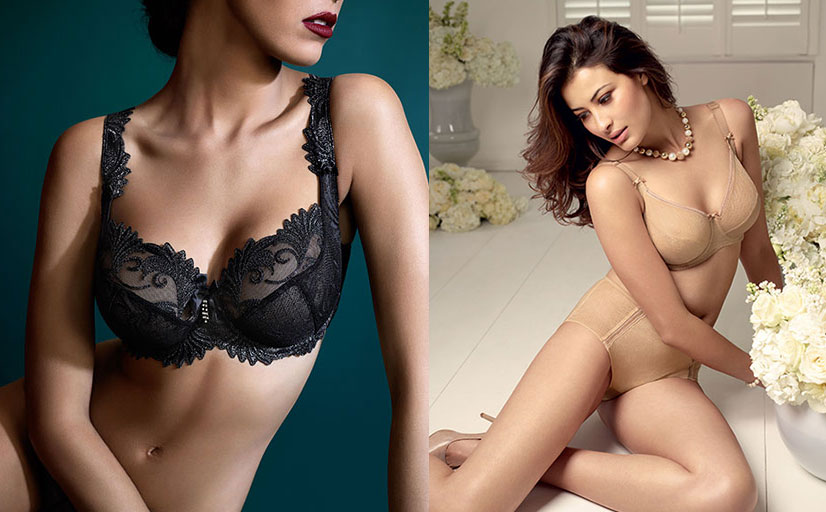
Empreinte and Fantasies
No one knows. Average bra size isn’t easy to pin down. First, no two breasts are alike. They don’t even stay the same size and shape over the course of a woman’s lifetime. Second, no two bra styles, or same size bras in different brands, fit alike. So is it any wonder that 8 out of 10 women are in the wrong size bra? Even that popular bra fitting mantra isn’t founded on meaningful research. All we can conclude about the current state of women’s breasts and bra sizes is that there’s not much science involved.
What do you think? Are women’s breasts getting bigger or are women simply discovering their correct bra size? Does it matter?
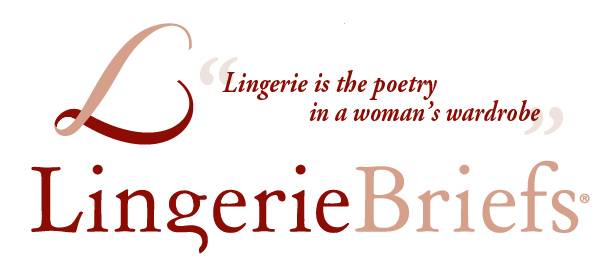
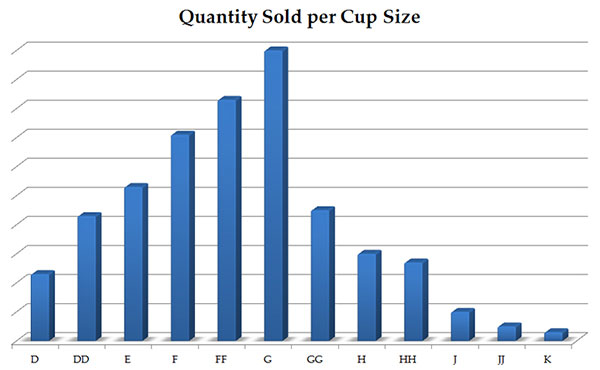
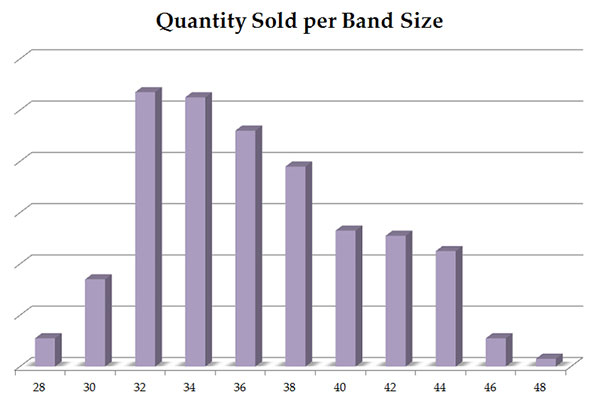
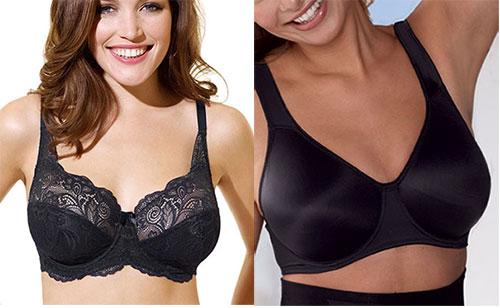

Thanks for including our charts in your discussion! I have some updated charts from our second year of operation too. Our best-selling sizes tend to be in the E-G range, and our best-selling size is a 32DDD/E. If I had to estimate what the average bra size for American women is, I would go with the sister sizes UK 34F/32FF/36E. I don’t know if the actual breast size has increased, or if women are just becoming more aware of how a bra should fit and are not content to settle on too small cups/too large a band. With the increased demand for more sizes (especially higher cup sizes), it’s natural to see a shift in what sizes are selling. It doesn’t meant the actual breasts have changed, only the need for a better representation of sizes. Either way, it’s food for thought!
I think there are several reasons for the increase in cup size.
-previously women were and sometimes are told to add 4 inches to their band size. Well this is no longer true anymore. Either we have learned it is better to wear a bra with a snug fitting band or it is a form of business practice to make the women feel better about their size and therefore happy with their purchase.
-hormones are a real possibility, soy estrogen is becoming more prevalent in our processed food and meats. Also fat produces more estrogen, the fatter the society the more estrogen we produce.
-lastly I think there is still a great barrier that your article underemphasises: it’s not easy to find a larger cup bra. Sure you can get up to DD at most places, after that things become difficult. Larger ribcaged women overthe band size 38 should have a fairly easy ffinding franchises that carry bra cup sizes over DD but after G cup your choices diminish quickly. If you are a 28-34 band size it’s near impossible to find a store that carries on larger cup sizes. Macys has only a handful of styles up to H cup, and with how much detail you went into differencing breast shape syou can see why this can be a problem. Anything beyond G/H cup size you are pretty much SOL in options. You have to be lucky to find a small boutique, possibly 100 miles away OR order online with no option to try on before you buy.
-women are taller today therefore proportionally bigger.
I am currently a 32J in the Freya line. And only currently own 3 well fitting bras because it is so extremely difficult. It took me a year to find new bras and of the 2 that I bought, the store I got them from has no other bras in my size. (not even identicals!)
I’m going to try to order online from Freya now that I have an idea how I fit their sizing.